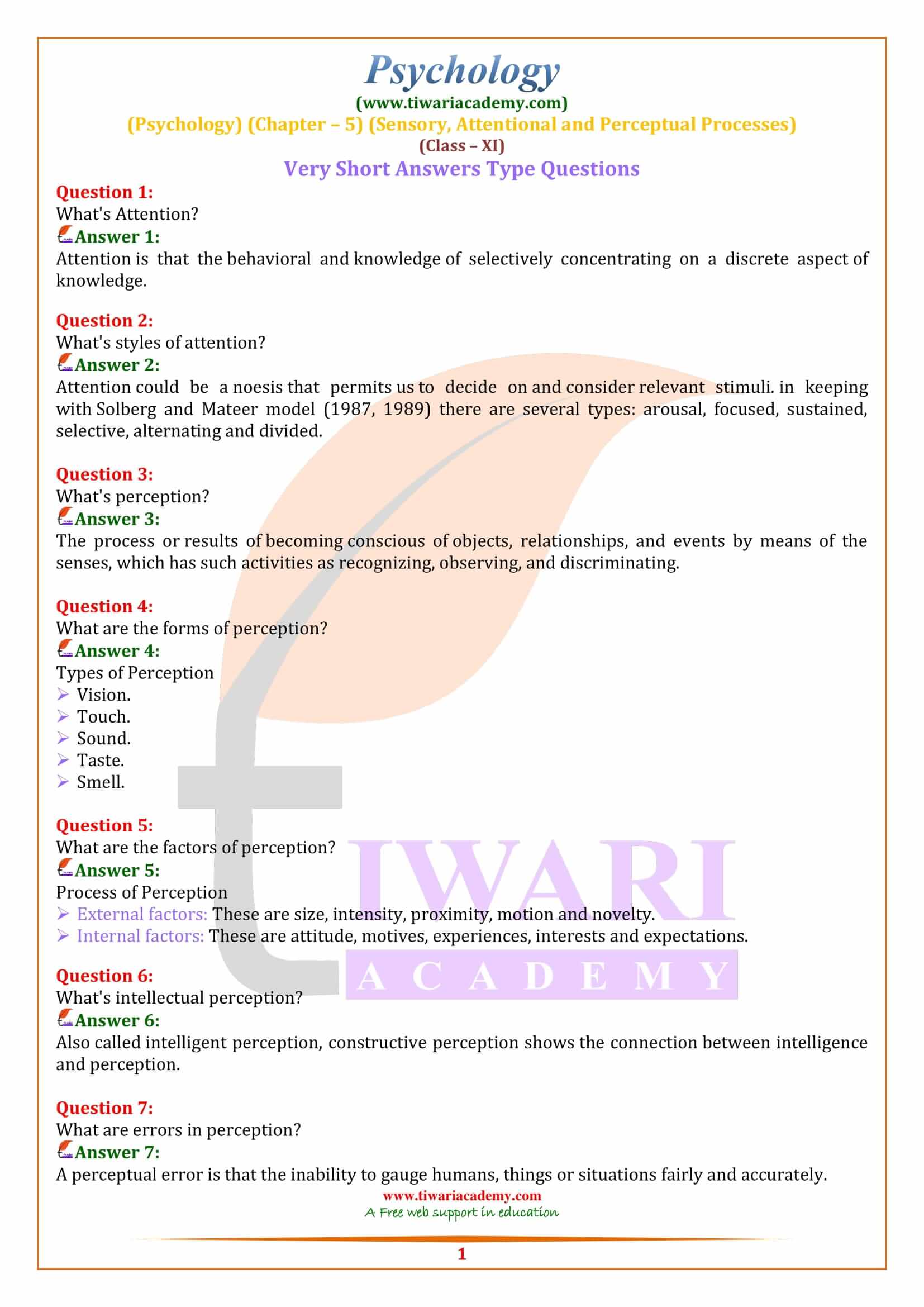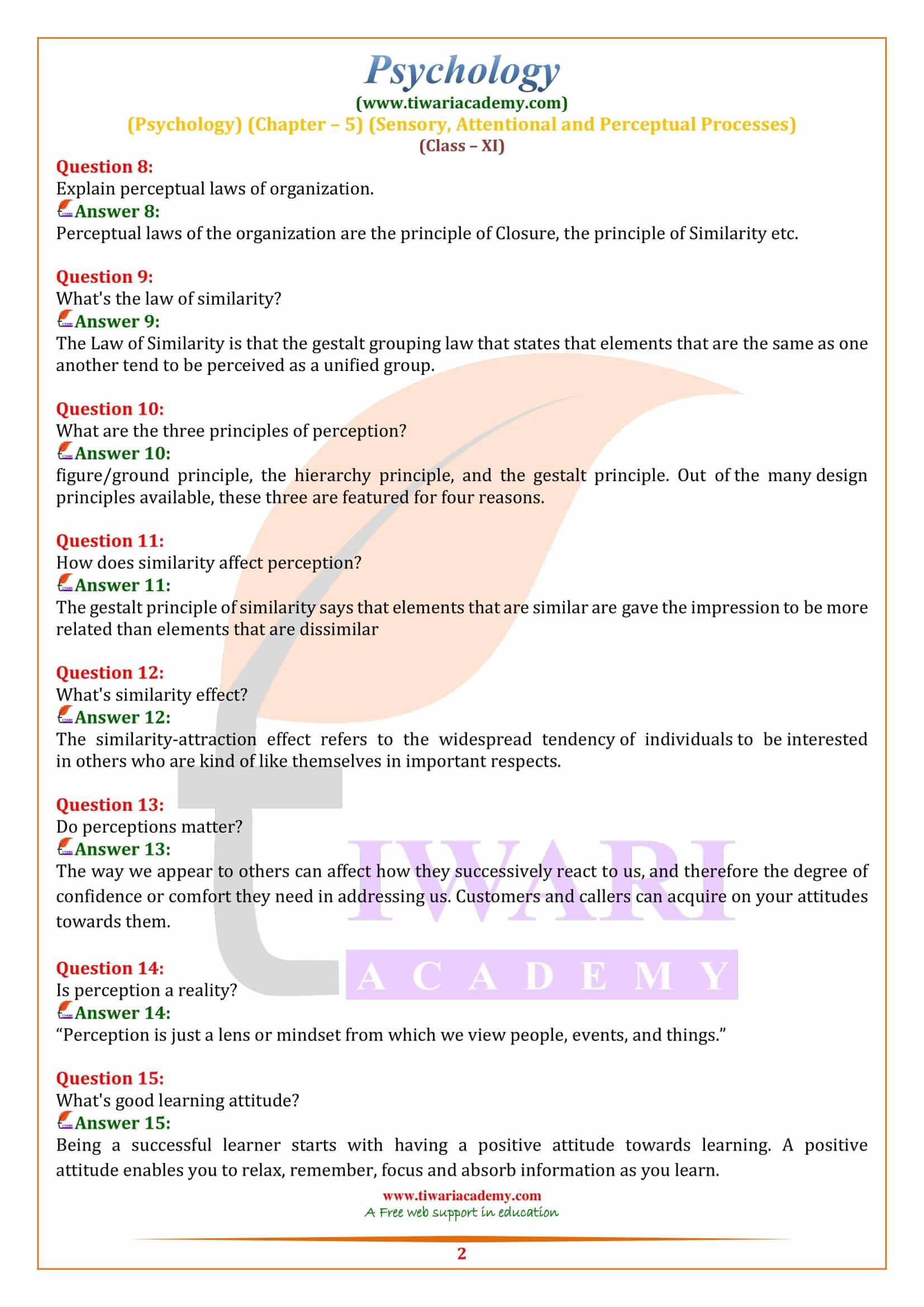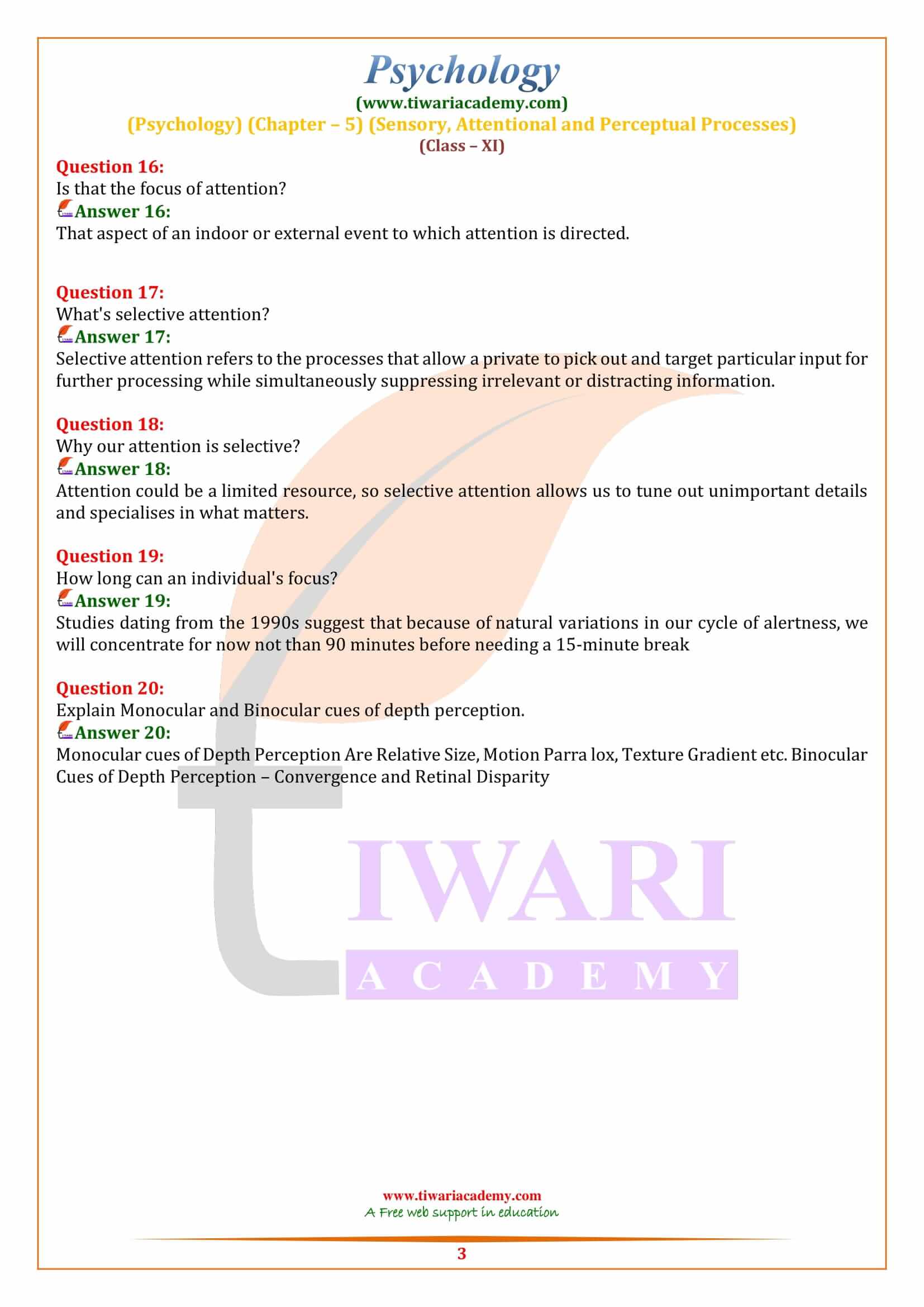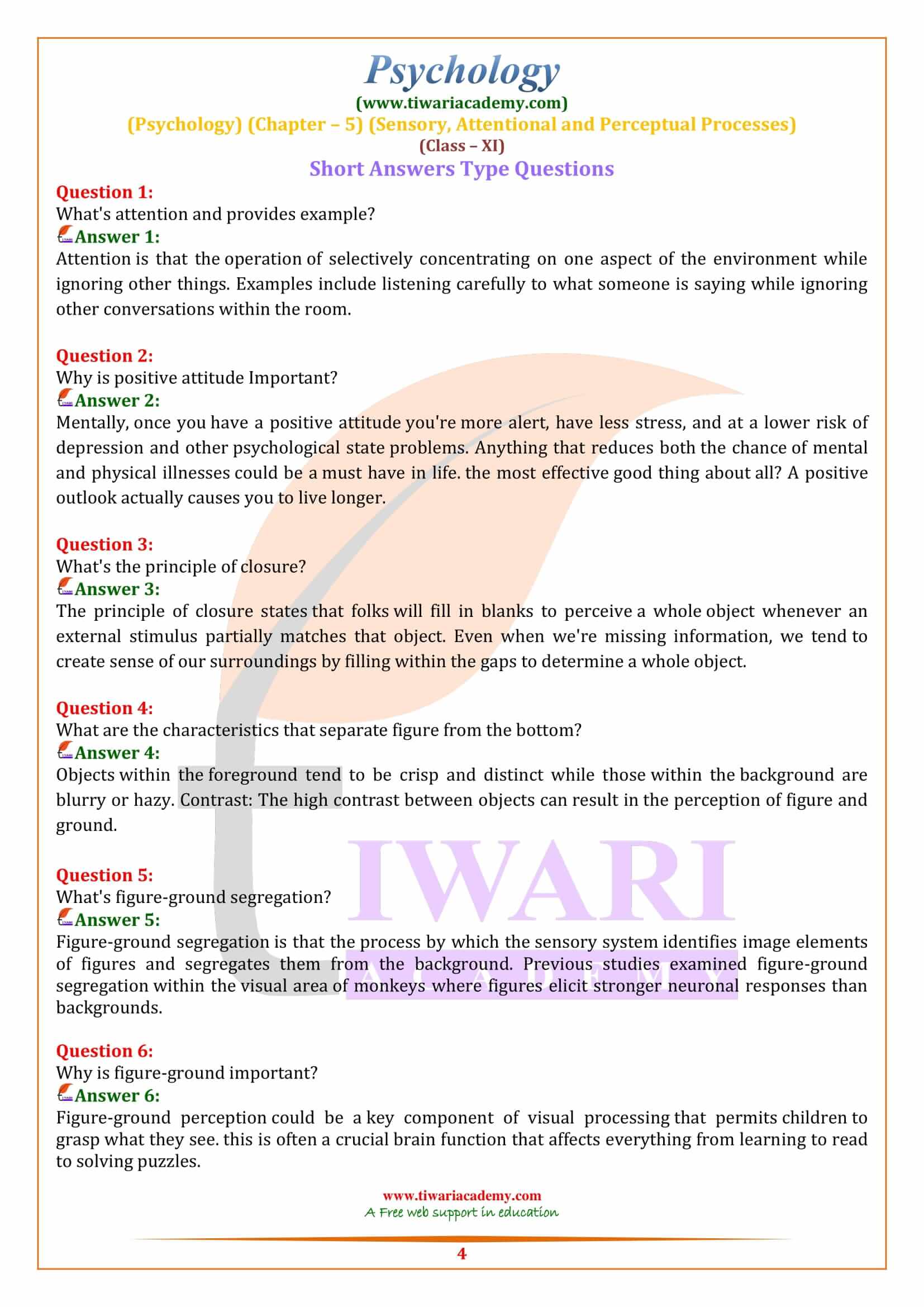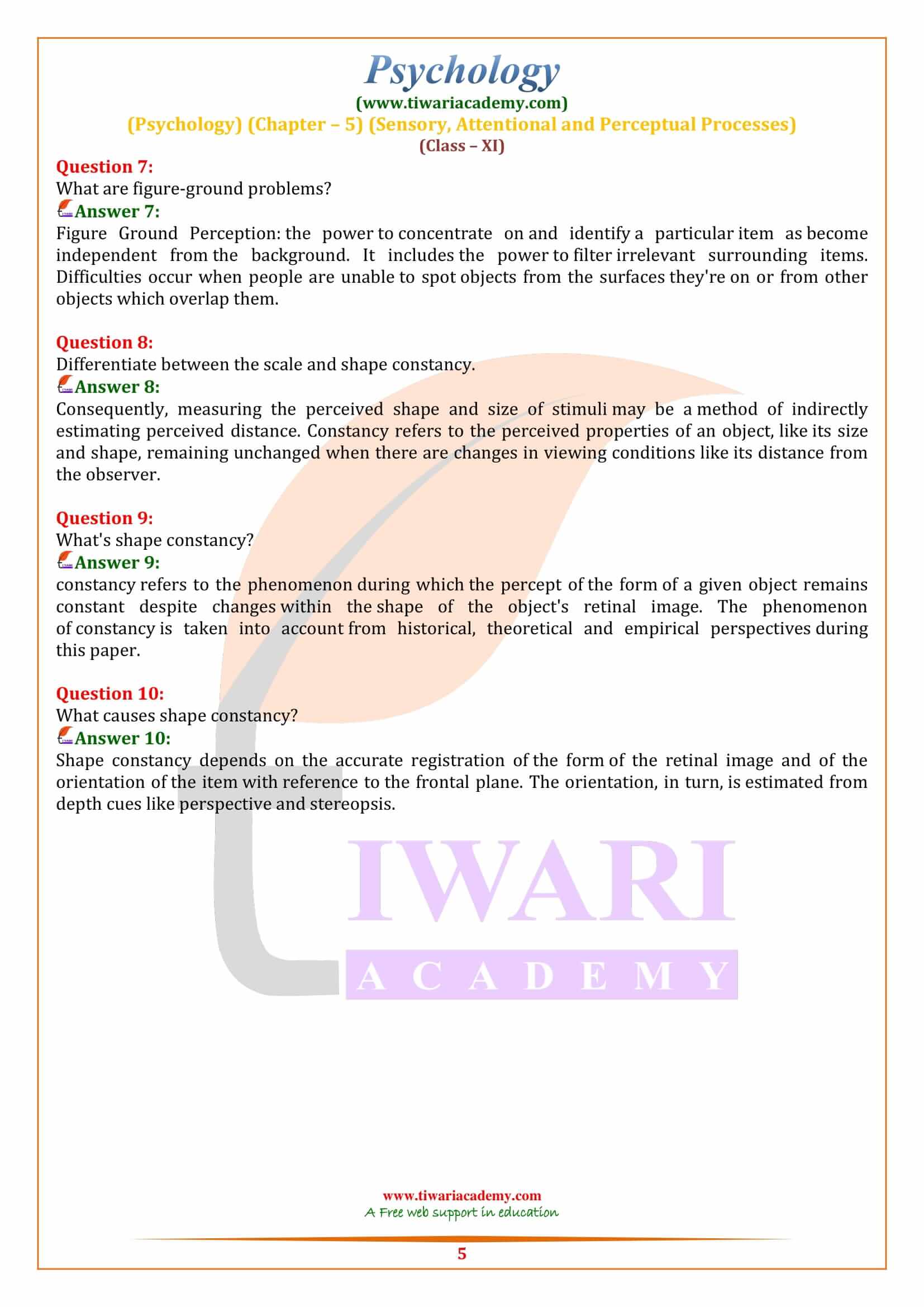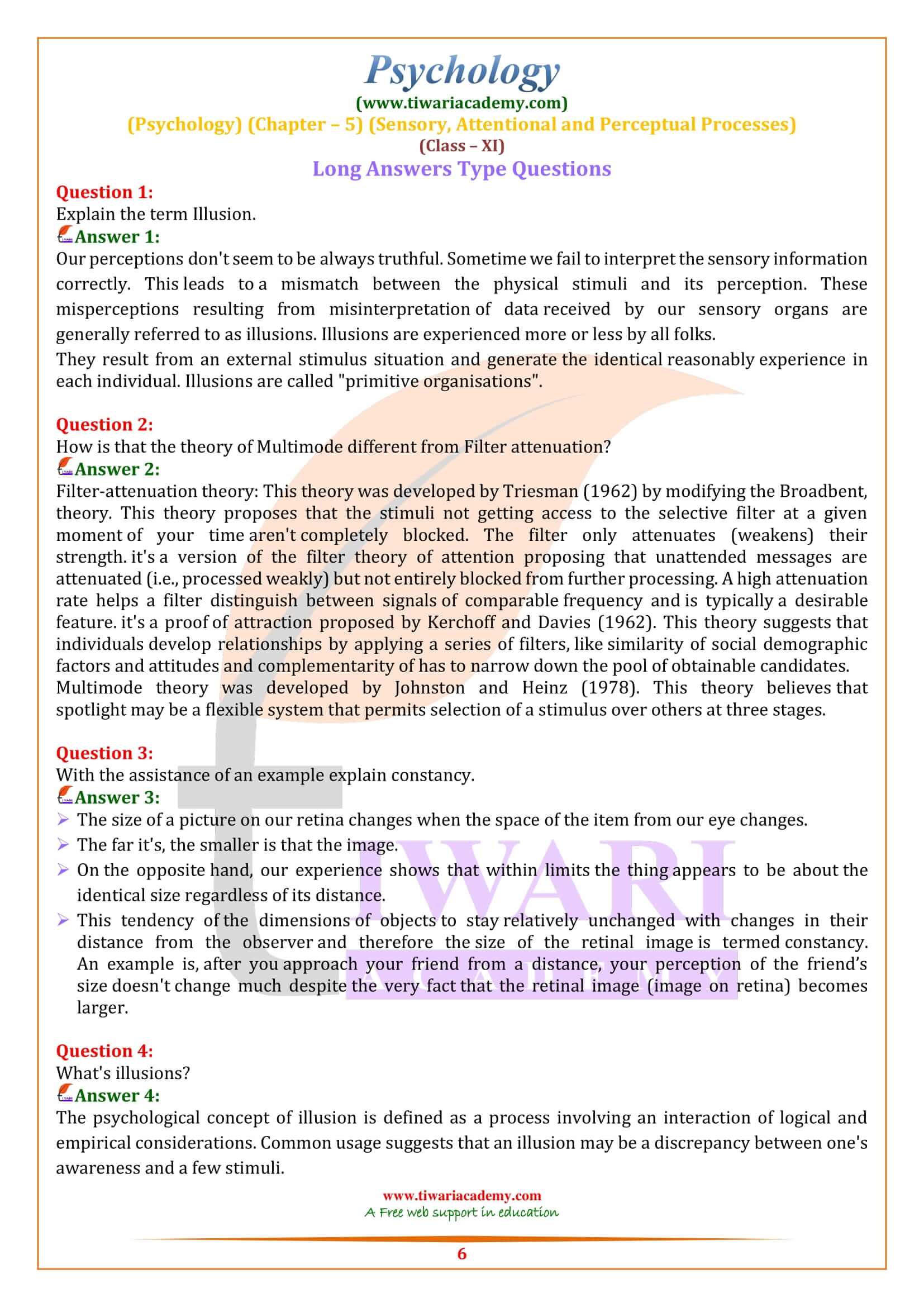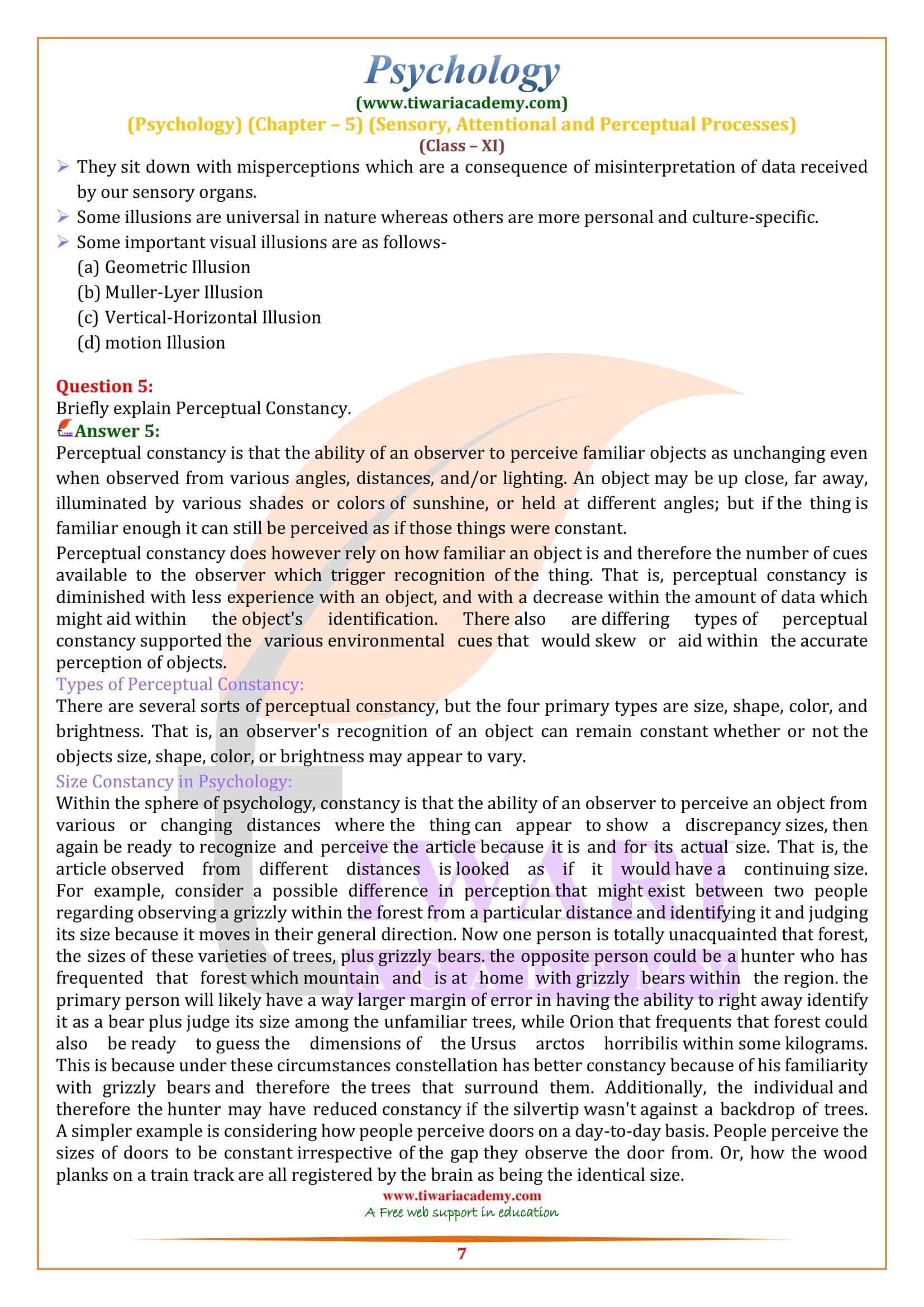Class 11 Psychology Chapter 5 Important Questions Sensory, Attentional and Perceptual Processes updated for CBSE board exams. Important Questions and Extra Question Answers for session 2025-26 given here will help the students to be confident in final exams. Practice Question Answers are explained in a simple way for better understanding.
With the assistance of an example explain constancy.
The size of a picture on our retina changes when the space of the item from our eye changes.
The far it’s, the smaller is that the image.
On the opposite hand, our experience shows that within limits the thing appears to be about the identical size regardless of its distance.
This tendency of the dimensions of objects to stay relatively unchanged with changes in their distance from the observer and therefore the size of the retinal image is termed constancy.
An example is, after you approach your friend from a distance, your perception of the friend’s size doesn’t change much despite the very fact that the retinal image (image on retina) becomes larger.
Briefly explain Perceptual Constancy.
Perceptual constancy is that the ability of an observer to perceive familiar objects as unchanging even when observed from various angles, distances, and/or lighting. An object may be up close, far away, illuminated by various shades or colors of sunshine, or held at different angles; but if the thing is familiar enough it can still be perceived as if those things were constant.
Perceptual constancy does however rely on how familiar an object is and therefore the number of cues available to the observer which trigger recognition of the thing. That is, perceptual constancy is diminished with less experience with an object, and with a decrease within the amount of data which might aid within the object’s identification. There also are differing types of perceptual constancy supported the various environmental cues that would skew or aid within the accurate perception of objects.
Types of Perceptual Constancy:
There are several sorts of perceptual constancy, but the four primary types are size, shape, color, and brightness. That is, an observer’s recognition of an object can remain constant whether or not the objects size, shape, color, or brightness may appear to vary.
Size Constancy in Psychology:
Within the sphere of psychology, constancy is that the ability of an observer to perceive an object from various or changing distances where the thing can appear to show a discrepancy sizes, then again be ready to recognize and perceive the article because it is and for its actual size. That is, the article observed from different distances is looked as if it would have a continuing size.
For example, consider a possible difference in perception that might exist between two people regarding observing a grizzly within the forest from a particular distance and identifying it and judging its size because it moves in their general direction. Now one person is totally unacquainted that forest, the sizes of these varieties of trees, plus grizzly bears. the opposite person could be a hunter who has frequented that forest which mountain and is at home with grizzly bears within the region. the primary person will likely have a way larger margin of error in having the ability to right away identify it as a bear plus judge its size among the unfamiliar trees, while Orion that frequents that forest could also be ready to guess the dimensions of the Ursus arctos horribilis within some kilograms.
This is because under these circumstances constellation has better constancy because of his familiarity with grizzly bears and therefore the trees that surround them. Additionally, the individual and therefore the hunter may have reduced constancy if the silvertip wasn’t against a backdrop of trees.
A simpler example is considering how people perceive doors on a day-to-day basis. People perceive the sizes of doors to be constant irrespective of the gap they observe the door from. Or, how the wood planks on a train track are all registered by the brain as being the identical size.
What’s figure-ground segregation?
Figure-ground segregation is that the process by which the sensory system identifies image elements of figures and segregates them from the background. Previous studies examined figure-ground segregation within the visual area of monkeys where figures elicit stronger neuronal responses than backgrounds.
Why is figure-ground important?
Figure-ground perception could be a key component of visual processing that permits children to grasp what they see. this is often a crucial brain function that affects everything from learning to read to solving puzzles.
What are figure-ground problems?
Figure Ground Perception: the power to concentrate on and identify a particular item as become independent from the background. It includes the power to filter irrelevant surrounding items. Difficulties occur when people are unable to spot objects from the surfaces they’re on or from other objects which overlap them.
Differentiate between the scale and shape constancy.
Consequently, measuring the perceived shape and size of stimuli may be a method of indirectly estimating perceived distance. Constancy refers to the perceived properties of an object, like its size and shape, remaining unchanged when there are changes in viewing conditions like its distance from the observer.
What’s shape constancy?
constancy refers to the phenomenon during which the percept of the form of a given object remains constant despite changes within the shape of the object’s retinal image. The phenomenon of constancy is taken into account from historical, theoretical and empirical perspectives during this paper.
What causes shape constancy?
Shape constancy depends on the accurate registration of the form of the retinal image and of the orientation of the item with reference to the frontal plane. The orientation, in turn, is estimated from depth cues like perspective and stereopsis.
